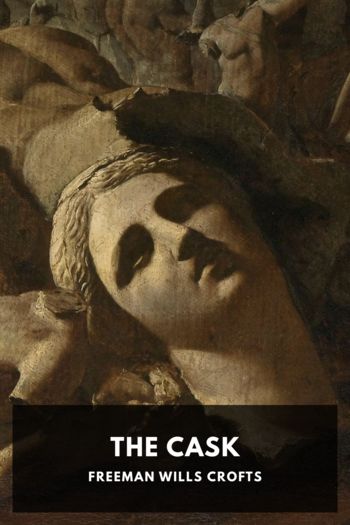The Small House at Allington - Anthony Trollope (i want to read a book txt) 📗

- Author: Anthony Trollope
Book online «The Small House at Allington - Anthony Trollope (i want to read a book txt) 📗». Author Anthony Trollope
As you pass along the road from Guestwick into the village you see the church near to you on your left hand; but the house is hidden from the road. As you approach the church, reaching the gate of it which is not above two hundred yards from the high road, you see the full front of the Great House. Perhaps the best view of it is from the churchyard. The lane leading up to the church ends in a gate, which is the entrance into Mr. Dale’s place. There is no lodge there, and the gate generally stands open—indeed, always does so, unless some need of cattle grazing within requires that it should be closed. But there is an inner gate, leading from the home paddock through the gardens to the house, and another inner gate, some thirty yards farther on, which will take you into the farmyard. Perhaps it is a defect at Allington that the farmyard is very close to the house. But the stables, and the straw-yards, and the unwashed carts, and the lazy lingering cattle of the homestead, are screened off by a row of chestnuts, which, when in its glory of flower, in the early days of May, no other row in England can surpass in beauty. Had anyone told Dale of Allington—this Dale or any former Dale—that his place wanted wood, he would have pointed with mingled pride and disdain to his belt of chestnuts.
Of the church itself I will say the fewest possible number of words. It was a church such as there are, I think, thousands in England—low, incommodious, kept with difficulty in repair, too often pervious to the wet, and yet strangely picturesque, and correct too, according to great rules of architecture. It was built with a nave and aisles, visibly in the form of a cross, though with its arms clipped down to the trunk, with a separate chancel, with a large square short tower, and with a bell-shaped spire, covered with lead and irregular in its proportions. Who does not know the low porch, the perpendicular Gothic window, the flat-roofed aisles, and the noble old gray tower of such a church as this? As regards its interior, it was dusty; it was blocked up with high-backed ugly pews; the gallery in which the children sat at the end of the church, and in which two ancient musicians blew their bassoons, was all awry, and looked as though it would fall; the pulpit was an ugly useless edifice, as high nearly as the roof would allow, and the reading-desk under it hardly permitted the parson to keep his head free from the dangling tassels of the cushion above him. A clerk also was there beneath him, holding a third position somewhat elevated; and upon the whole things there were not quite as I would have had them. But, nevertheless, the place looked like a church, and I can hardly say so much for all the modern edifices which have been built in my days towards the glory of God. It looked like a church, and not the less so because in walking up the passage between the pews the visitor trod upon the brass plates which dignified the resting-places of the departed Dales of old.
Below the church, and between that and the village, stood the vicarage, in such position that the small garden of the vicarage stretched from the churchyard down to the backs of the village cottages. This was a pleasant residence, newly built within the last thirty years, and creditable to the ideas of comfort entertained by the rich collegiate body from which the vicars of Allington always came. Doubtless we shall in the course of our sojourn at Allington visit the vicarage now and then, but I do not know that any further detailed account of its comforts will be necessary to us.
Passing by the lane leading to the vicarage, the church and to the house, the high road descends rapidly to a little brook which runs through the village. On the right as you descend you will have seen the “Red Lion,” and will have seen no other house conspicuous in any way. At the bottom, close to the brook, is the post-office, kept surely by the crossest old woman in all those parts. Here the road passes through the water, the accommodation of a narrow wooden bridge having been afforded for those on foot. But before passing the stream, you will see a cross street, running to the left, as had run that other lane leading to the house. Here, as this cross street rises the hill, are the best houses in the village. The baker lives here, and that respectable woman, Mrs. Frummage, who sells ribbons, and toys, and soap, and straw bonnets, with many other things too long to mention. Here, too, lives an apothecary, whom the veneration of this and neighbouring parishes has raised to the dignity of a doctor. And here also, in the smallest but prettiest cottage that can be imagined, lives Mrs. Hearn, the widow of a former vicar, on terms, however, with her neighbour the squire which I regret to say are not as friendly as they should be. Beyond this lady’s modest residence, Allington Street, for so the road is called, turns suddenly round towards the church, and at the point of the turn is a pretty low iron railing with a gate, and with a covered way, which leads up to the front door of the house which stands there. I will only say here, at this fag end of a chapter,





Comments (0)